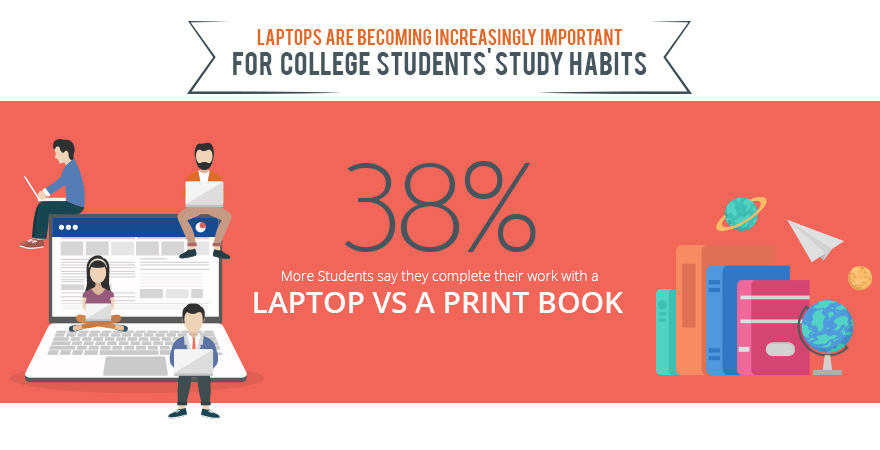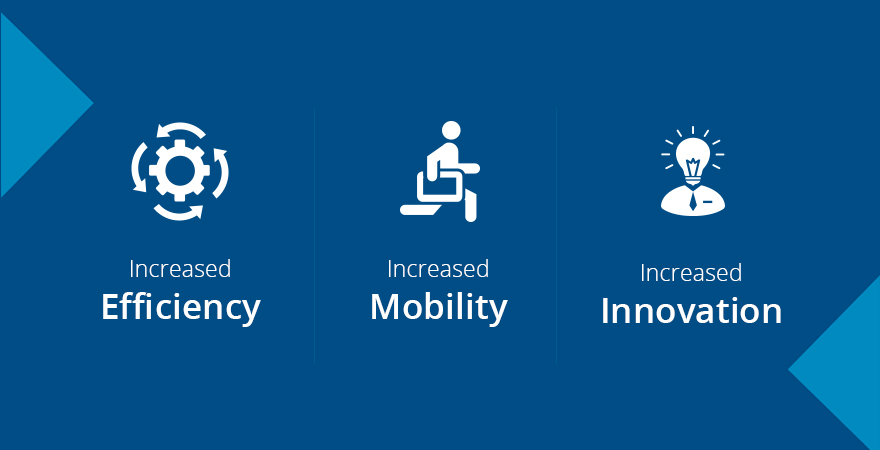A survey by McGraw-Hill found that students are increasingly relying on digital technologies to succeed in their college careers. 94% of students surveyed indicated that digital learning tools helped them retain new concepts and 60% of them stated they improved their grades. 38% of students use their laptops to complete their homework.

The Impact of Digital Transformation in Higher Education
81% of teachers believe that edtech positively impacts learning, which agrees with the students own assessments. Even with these statistics, however, 4 out of 10 teachers believe their institution is behind the curve when it comes to adoption and implementation. Evidence shows that students are increasingly relying on new technologies, and institutions that fail to keep up could be losing out.
3 Reasons Higher Education should Adopt Desktop-as-a-Service (DaaS)

A study conducted by EdTech Magazine found that the majority of Higher Education Institutions migrated to cloud solutions to increase efficiency (55%), mobility (49%), and innovation (32%). But how does this affect a students ability to learn?
Increased Efficiency
A study performed by Global Workplace Analytics found that when employees were able to work from home, productivity and efficiency increased by as much as 43%. The same could be said about students when considering a private hosted workspace.
Think about the typical college student, who we will call Ed. Ed is in his freshman year of college at his local university. Ed is learning new skills, both inside and outside of the classroom. He is experimenting with his newfound freedom to choose his schedule, both of ensuring participation in his assigned classes and in forming new relationships. Ed spends a large amount of his time with his new friends in the campus coffee shop. During one of these frequent meetings, Ed begins to discuss his latest research project with his classmates, and as he does so, the social event becomes a working event. Since this discussion was done ad-hoc, neither Ed nor his friends, had the physical assignment in their hands but wanted to check the parameters to ensure they were going in the right direction.
Hosted Workspaces and Desktop-as-a-Service have a unique advantage over the traditional workspace. And that is the fact that the entire desktop is stored virtually in the cloud. This enables students, like Ed, staff, and tutors to access their information from anywhere, and from any device. This meant that Ed and his classmates would just need to find an internet connected device and log into their hosted desktop to find the assignment that the professor had placed on the server.
Increased Mobility
Today’s generation of college students has grown up with immediate access to information thanks to the proliferation of smartphones and tablets. EdTech Magazine talks about a study performed by Ellucian that found that 85% of students surveyed indicated that “a mobile app from their university would have helped to ease their transition to college and 73% believe it would have helped them become more involved on campus.” These applications are believed to improve student academic performance because students who are more connected and involved on campus learn vital skills to help them effectively manage their time. One student interviewed in the EdTech article said it best, “I had to be disciplined to get all my work done so I could participate in clubs and organizations.”
Since Hosted Workspaces can be accessed from ANY internet connected device, this includes smartphones and tablets. Let’s go back to Ed. We left off with Ed and his friends partaking in an impromptu working session for a collaborative assignment for one of their classes. Since this was not a planned working session, no one brought computers or the papers detailing the parameters of the assignment. But, each student has a smartphone and some have tablets. With a simple launch of a web browser on any of these devices, Ed and his friends are able to not only view their assignment but can also access their desktop. Through this browser, Ed launches a Word document (or whatever the chosen word processing program is) and begin composing the assignment. Then when Ed returns to his dorm, he can access the very document he was working on and continue his efforts.
Increased Innovation
The competition for students is fierce in the Higher Education system, and technology plays a critical role in the success of any university recruitment program. The McGraw-Hill survey found that the majority of the students surveyed preferred classrooms that use digital tools such as cloud solutions or mobile applications. EdTech Magazine interviewed a DePaul University student, Lauren Polito, on the importance of digital tools to her university education. In the interview, Polito describes how today’s students have a lot on their plate, and flexibility and technology allow them to juggle the various responsibilities they have. Polito herself shares how she often works on her school assignments during her commute to school on her cell phone, helping her to keep up with her school work.
Cloud Solutions: Bridging the Gap
As has often been felt in K-12 education, the traditional way of achieving educational success is changing. Gone are static classrooms where everyone must physically attend and paper books, to be replaced with digital tools and online classrooms. Students are using multiple devices, both in class and out of class, to take notes and enhance their learning experience and Higher Education institutions need to create environments that enhance teaching, learning, and collaboration among both teachers and students. Desktop-as-a-Service (DaaS) enables this by reducing costs and complexity as well as scalability, agility, and modernization, and Higher Education needs to take note. Start your journey to an enhanced student environment with dinCloud.


